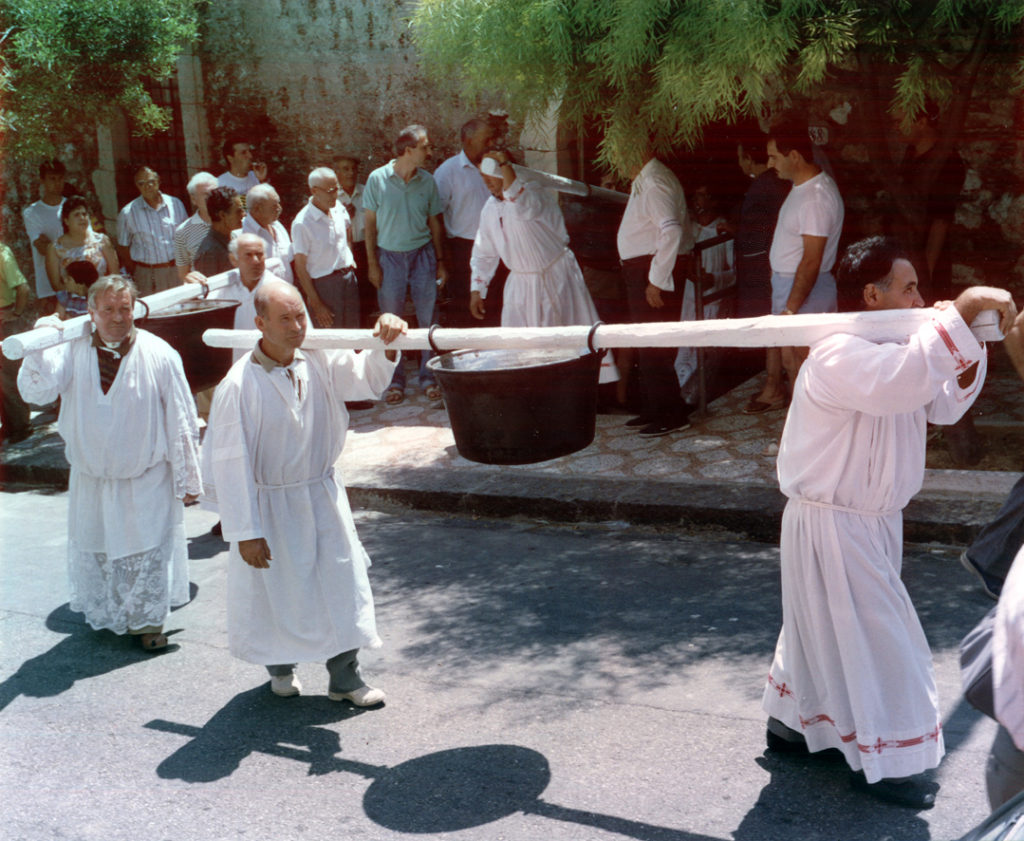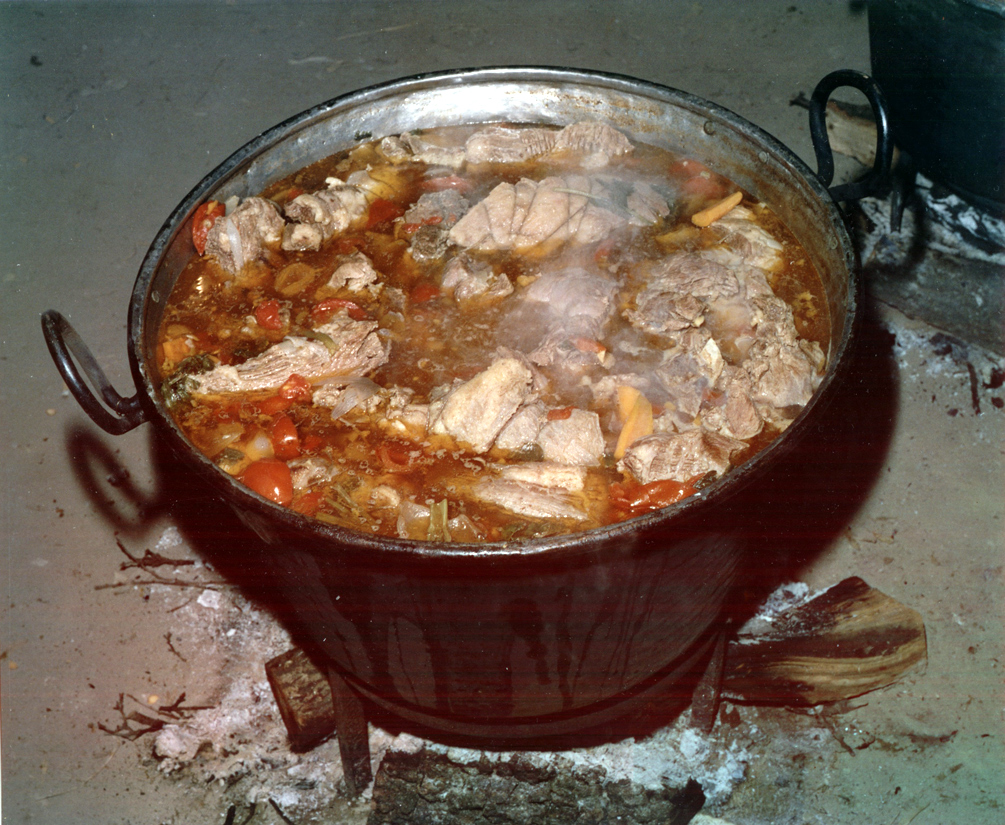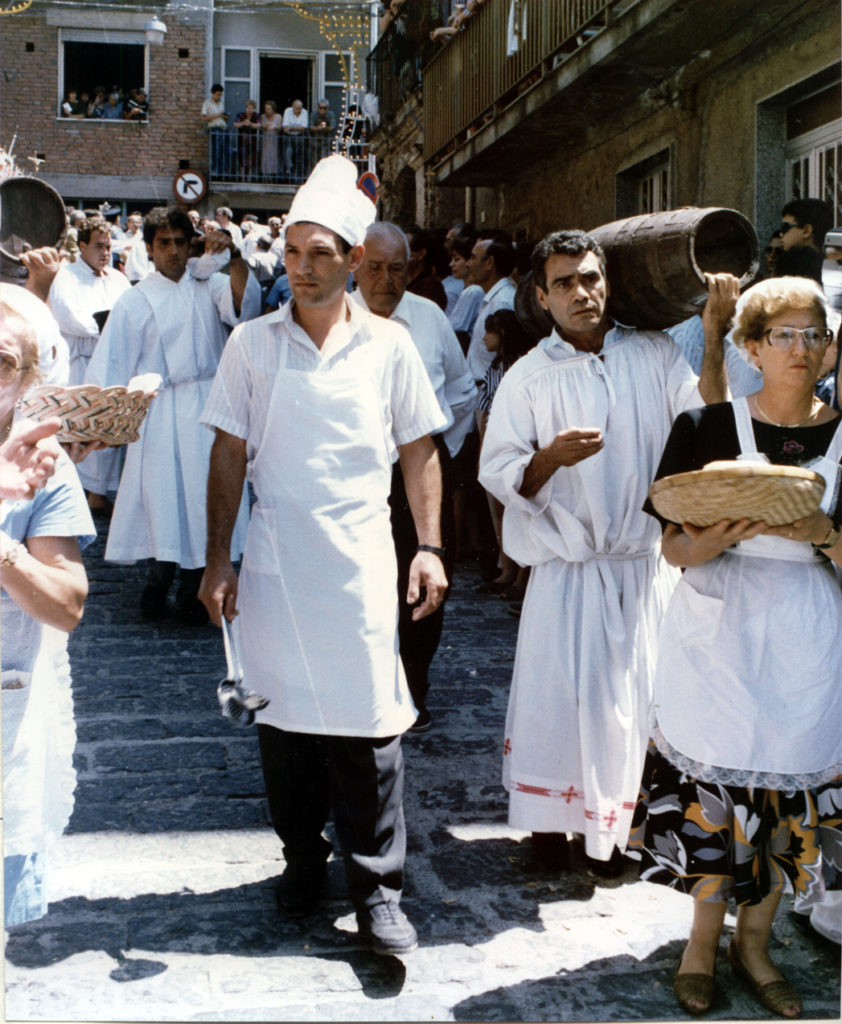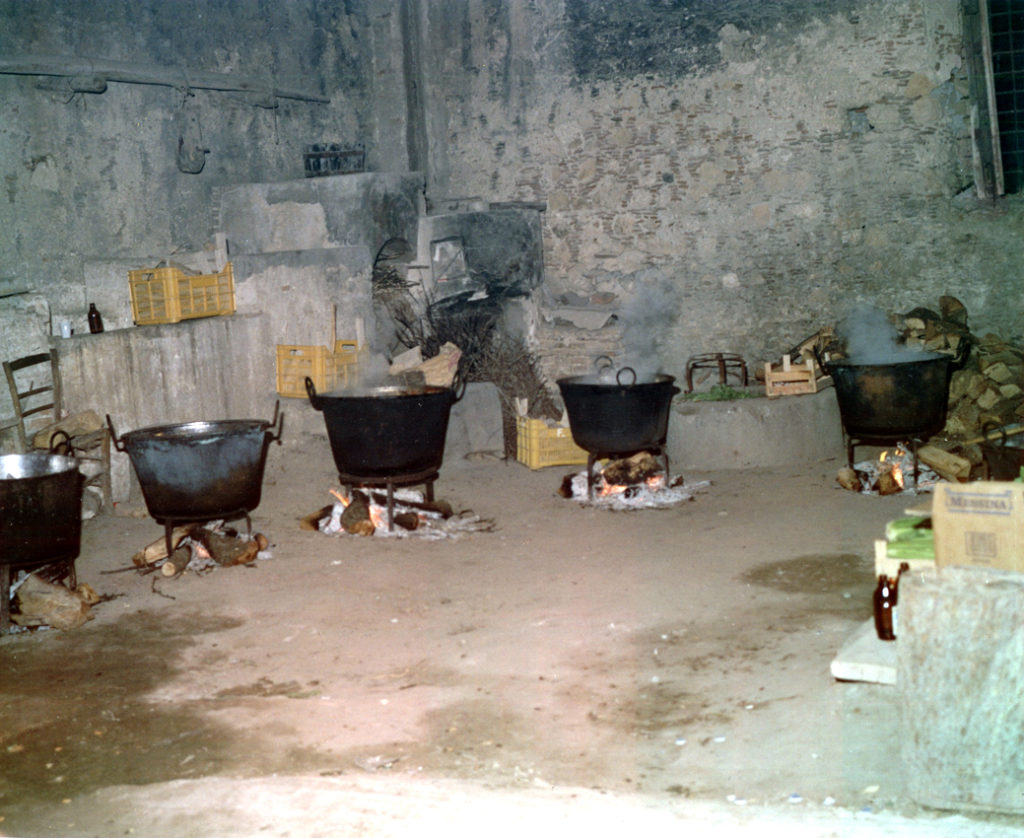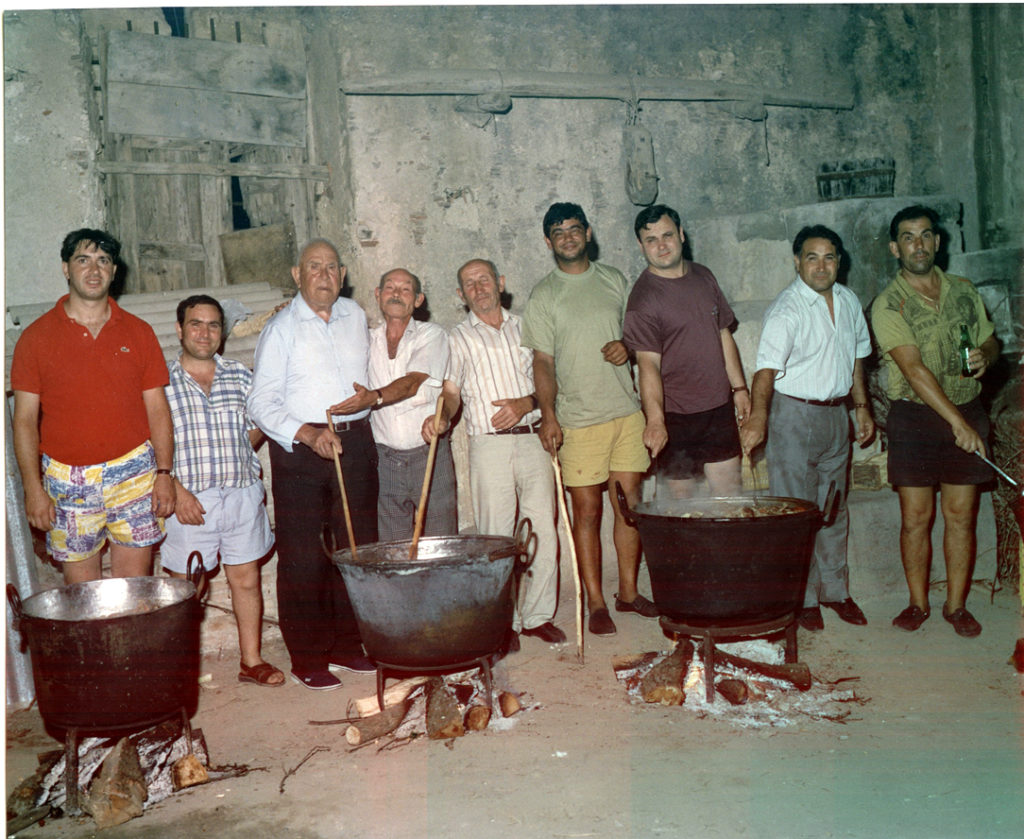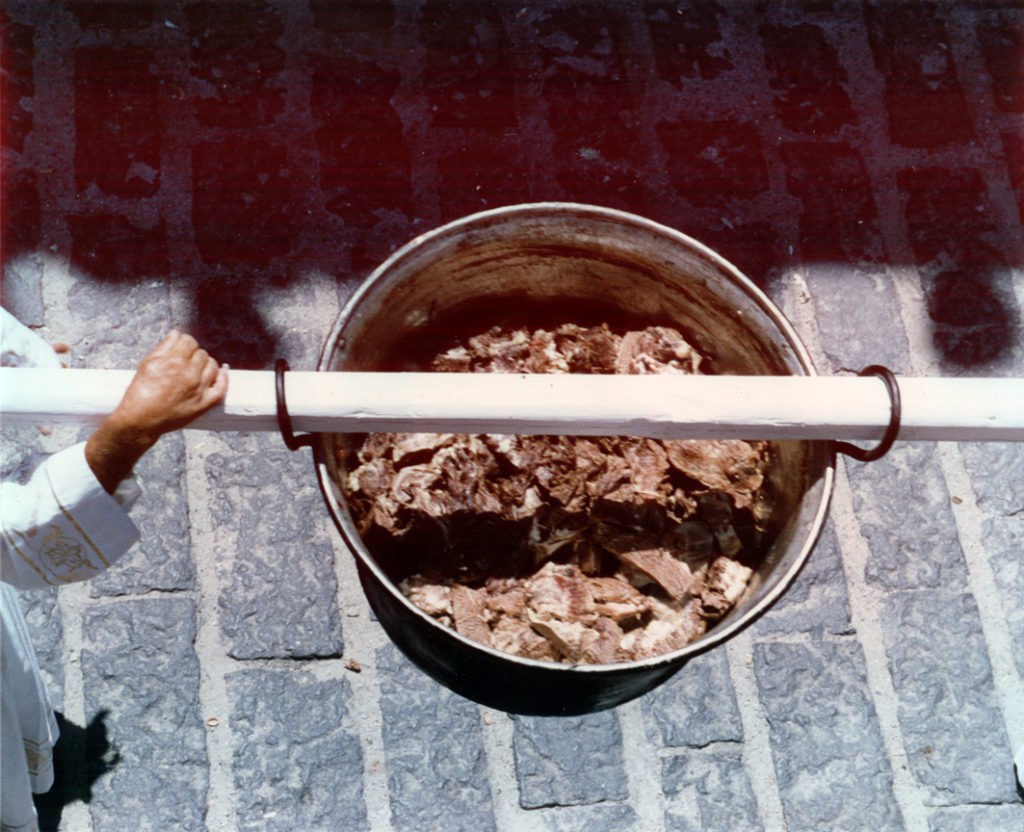The Sacred Banquet of the Convito in Roccavaldina
To speak of the sacred meal, which characterizes the ritual form of the Convito, we must return to the aspect that pertains specifically to Saturday. This is the day when the animal’s hides are cleaned and drained of blood and then cooked. Within the space where the animal is sacrificed, the cooking of the food also takes place. The meat is cut and boiled. In the broth produced from the meat, rice is also cooked. It is a slow and prolonged cooking process—indeed, it continues throughout the entire night of Saturday.
The moment of cooking, through boiling, constitutes a prolonged phase within the broader ritual. For an entire day, the community is fully absorbed in the preparation of the sacred meal, which will be consumed on Sunday. During this final day, the banquet serves a symbolic function for the society, which unfolds in the transformative processes of gift-giving and the reciprocity that accompanies it. At the moment when the sacred meal is consumed, a new social structure is symbolically re-established.
At the banquet tables, there will be one panuzzu (little bread) per person and a glass of wine. From inside the Castle, the rice in broth and the meat stew will be brought out and distributed to the attendees. The banquet represents a ritual space that becomes a perfect stage for conviviality and reciprocity in the presence of the sacred. It is in this specific rite that we see enacted the tripartite structure which defines any ritual based on the act of gift-giving: giving, receiving, and reciprocating.
This structure, in fact, provides the framework through which we can measure the significance of this specific form of total social fact.
This element has been included in the Register of Intangible Heritage of local interest of the Municipality of Roccavaldina, as part of Intervention 4 “Activation of the Observatory on the Intangible Cultural Heritage of the Territory through the application of the REIL methodology – Register of Intangible Heritage of Local Interest”, within the “Ghadan” project, funded by the NRRP (National Recovery and Resilience Plan), Mission: Digitalisation, innovation, competitiveness, culture and tourism, Component: Tourism and culture 4.0, Investment 2.1 “Attractiveness of villages” CUP J29J2200146000.
